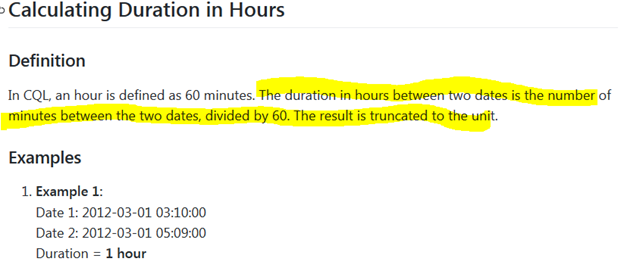-
Type:
Hosp Inpt eCQMs - Hospital Inpatient eCQMs
-
Resolution: Answered
-
Priority:
Moderate
-
Component/s: Guidance
-
None
We have a question to verify the expectation about the calculation of duration in hours in the example provided below which is used in any Eligible Hospital eCQM where an ED visit is being evaluated.

Example
ED End Date/Time = 2019-03-01 03:10:00
Inp Admission Start Date/Time = 2019-03-01 05:09:00
The duration calculation as per above example would return 1 hour while in minutes this would be 119 minutes (or 1 hour and 59 minutes).
Would you expect this patient to meet the condition specified in the ED-1 Initial Population logic below-

Outcome 1 - If you go by minutes then the ED visit end date/time is not within 1 hour or less before or on start of inpatient encounter, so this condition should return false and patient should not meet the IPP
Outcome 2 - But if you go by the hour calculation above, after truncation it returns 1 hour, and therefore the condition ends 1 hour or less before or on start of inpatient encounter would return true and patient would be included in the encounter.
Could you help verify which outcome is expected?
Thanks in advance for our review and guidance.